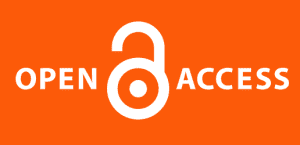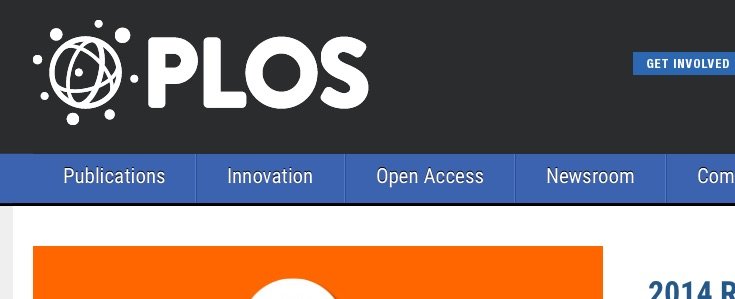Open Access: Easy Access for Plagiarists
 Plagiarism in academia is typically thought to be a one-way street. Whether it’s about determining if a research paper is authentic, a student completed their own assignment or a proposal is genuine, most academic plagiarism focuses not on stopping plagiarism of original work, but catching those who submit plagiarized work as original.
Plagiarism in academia is typically thought to be a one-way street. Whether it’s about determining if a research paper is authentic, a student completed their own assignment or a proposal is genuine, most academic plagiarism focuses not on stopping plagiarism of original work, but catching those who submit plagiarized work as original.
However, as more and more academic work gets posted to the Web, that work is finding an unethical secondary market, one that is seeing the work used without attribution, permission or any contribution to humanity.
Unfortunately, that market is growing and it poses a serious threat to legitimate researchers and students everywhere.
The good news, however, is that there are things that can be done about it and ways researchers can protect themselves and their work. However, we must first change our mindsets about academic plagiarism and take a look at how academic misuse is being changed by the Web.
Open Access Meets an Open Internet
 One of the biggest changes in academic research in the past 20 years has been the open access movement.
One of the biggest changes in academic research in the past 20 years has been the open access movement.
Under the traditional research publishing model, a researcher would draft a paper, submit it to journals, which would then peer review them and select the best papers to published. However, once published the paper would only be available (legally) in the journal itself, which was typically very expensive.
This limited access to the content, which was often valuable to others in the field and it also meant that the researcher often had to give up control over their own work, signing away the copyright in their research.
Open Access, on the other hand, removes such restrictions on the work, placing all published work under a Creative Commons (Usually a CC-BY license) or other open license. While this movement has drawn some controversy because it requires researchers to pay for their own publication, it keeps the work available for all to access, copy and build from.
The Open Access movement has published millions of articles on open sites for others to reuse. But the impact of Open Access as an idea is much larger. Universities are openly publishing dissertations and theses from students on their sites, classes often have websites where student work is published and the list goes on.
While this movement toward increased access to academic work is, on the whole, a very good thing, it runs into a problem when it meets two sinister forces on the Internet: Spammers and essay mills.
That’s because, while academia is quenching its thirst for content, they’re doing the same and in ways that likely hinder, rather than help academic progress.
The Web Spam Problem
Web spammers have always had an appetite for quality keyword-rich content, so much so that they’ve been known to engage in RSS scraping, article spinning and other tricks to lift, create or otherwise obtain large amounts of seemingly-legitimate content.
Academic works carry a special appeal to spammers. Not only are they keyword dense, very long and often on topics that are highly searched for, but many open access journals block search engines from directly accessing the papers, either through required logins or robots.txt.
That means, as far as Google is concerned, when a spammer posts a lifted academic paper, he or she is posting an original work.
This creates a real problem for researchers.
The impact of a paper is largely determined by the number of times it is cited in other works. However, when spammers pollute relevant keywords with bogus copies, it becomes more difficult to find the original work or those doing the searches might be led to believe the paper isn’t reputable because of where it appears.
While this issue is mitigated some by the fact many, if not most, searches for scholarly content take place on specialized tools that don’t crawl the full Web, more and more regular search engines are being used in research and that means their accuracy in finding high-quality references is crucial.
But while the spammers are certainly bad enough, they aren’t nearly as nefarious as the essay mills and essay sites.
Essay Mills and Essay Sites
 Essay mills are a problem that predate the Internet. They started as mail order businesses and moved online shortly after the Internet started taking off.
Essay mills are a problem that predate the Internet. They started as mail order businesses and moved online shortly after the Internet started taking off.
There are two types of sites, essay mills, which produce custom-written essays for students at an expense, and stock essay sites, which provide downloadable essays students can use. (Note: Some sites offer both services.)
Both of these have largely been spurned on by the growth in use and effectiveness of anti-plagiarism software. As copying from the Internet has become more and more dangerous, students seeking a shortcut have sought out “safer” alternatives, such as custom essays and limited publication essays.
While it’s often true that these turn up in plagiarism detection tools just as well as regular copy-and-paste jobs, they’ve become a popular and lucrative alternative.
But as with spammers, the thirst for content outweighs their ability to create it with the time and expertise they have. This is why custom essays often contain plagiarized or shoddy content and why some essay mill sites have begun taking open-published articles, either to present as samples or, in some cases, to sell.
Typically, these sites will include the title of the work and the first few paragraphs of the actual paper (or the abstract if there is one). If it’s presented as a sample, they may include the entire work but if it’s for sale, they’ll only display the minimum they can, only offering the full work to those who pay.
This has an even worse impact on the research than spamming. Not only does it cause the standard search engine issues, but connecting a work with an essay mill site immediately casts doubts on the paper and/or the ethics of the researchers.
Fortunately, these types of problems are fairly easy to stop, but academics have to get in the mindset not of just policing plagiarism, but of being victims of it.
What Researchers and Students Can Do
Right now, thanks to spammers and essay mill sites, there is a very real and very lucrative market for your work. Unfortunately, that market, usually, doesn’t have any use for your name nor does it care about your work, your career or growing human knowledge.
To make matters worse, there isn’t a great deal that can be done proactively to prevent this kind of misuse. Other than changing the topics you write about to steer clear of popular essay mill or spammer keywords, or changing length to make it unusable for most applications, there’s not much that can be done if a work is going to be made public.
However, you can still keep on top of this problem and either make sure it isn’t happening to you or, if it is, deal with it swiftly. Since spammers and essay mill sites alike tend to pass around content amongst themselves, catching infringement early is one of the keys to ensuring that it isn’t infringed broadly.
On that note, there are a few simple steps you can take to achieve just that.
- Be Careful with Your Contracts: No matter where you work or where you publish, be careful that you aren’t signing away copyright in your work. If you don’t have the copyright, you can’t be able to defend your work and will have to rely on whoever holds it to do the work, which they likely won’t be interested in doing.
- Be Aware of Your Licenses: When you publish an work, in particular in an open access environment, you’re going to give up certain rights to that work. Make sure that those rights do not prohibit you from defending your work if it is plagiarized. Note: All Creative Commons licenses require attribution and should be fine.
- Search for Your Work: Do regular Google searches for your work. When dealing with academic works, titles, abstracts and beginning paragraphs are the most commonly used. Due to the nature of the work, you’ll likely want to use long strings of text in quotes to avoid catching similar, but non-plagiarized works in your net.
- Send Takedown Notices to Infringers: If you find sites that are infringing your content, file takedown notices with their hosts. You can follow the guide here (steps 3 and 4) for me information.
- Request Search Engine Removal: Finally, if you are unable to get the content removed directly, file a Digital Millennium Copyright Act (DMCA) removal with Google and other search engines. You can find Google’s DMCA form here.
If you take those steps and perform your checks regularly, you’ll likely be able to keep the misuse of your work to a minimum and deal with the cases that do rise up.
Hopefully though, the incidents will be few and far between.
Bottom Line
To be clear, open access is still far and away a great thing. The improved access to research and knowledge has done great things for the world. Furthermore, despite these issues, most researchers (and students) are better off publishing in an open access environment if they can. Greater access and greater visibility outweighs the issue of plagiarism.
However, that doesn’t mean we should accept and stand by while academic works are used in this manner, not when there are simple tools for addressing the issue.
That being said, not all academic works are going to be misused in this way and some will see more challenges than others. A lot of this will depend on the subject of the work, the keywords in it and the length of the work.
The more general a work is or the more it fits into popular categories, the more misuse it will likely see from essay mills. Likewise, if it includes spam-friendly keywords or covers related topics, it will see more misuse from spammers.
However, since no work is completely safe, all academics would be wise to at least check and find where their work is being used online. Even if this doesn’t turn up plagiarists or essay sites using the work, it can turn up others talking about the work or sharing it legitimately.
So, even if you have no interest in protecting your work, it can be nice to see what others are saying and what impact your work is having. Many times, that’s the most rewarding part of checking for your work and something that I began to cherish as I was doing plagiarism checks for my content.
Because, while I made more than a few enemies checking for plagiarism of my work, I made many more friends.
Want to Reuse or Republish this Content?
If you want to feature this article in your site, classroom or elsewhere, just let us know! We usually grant permission within 24 hours.
